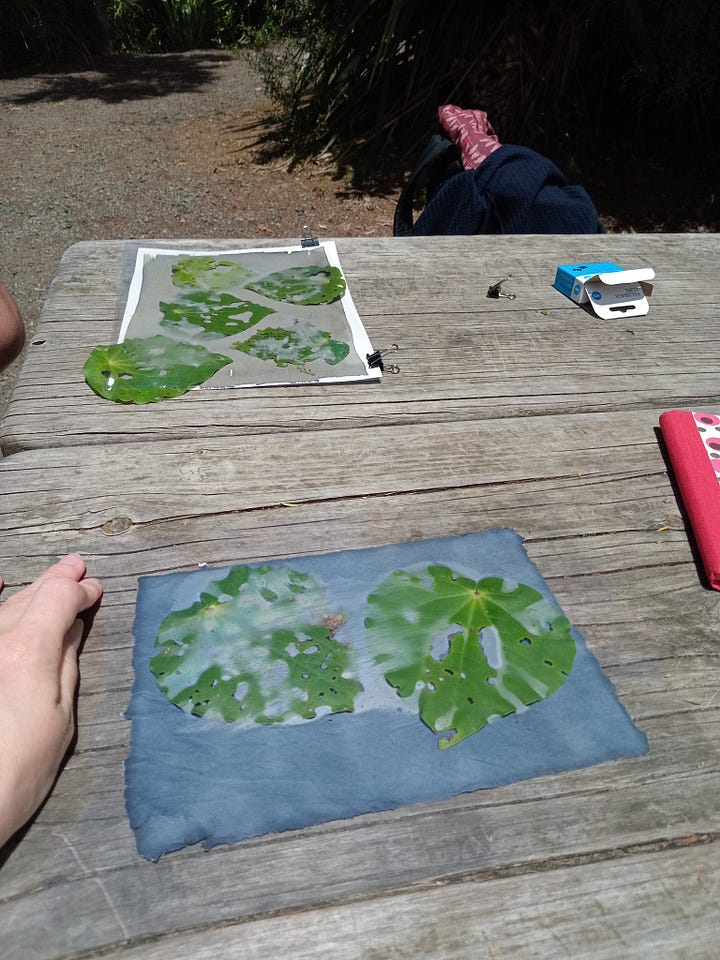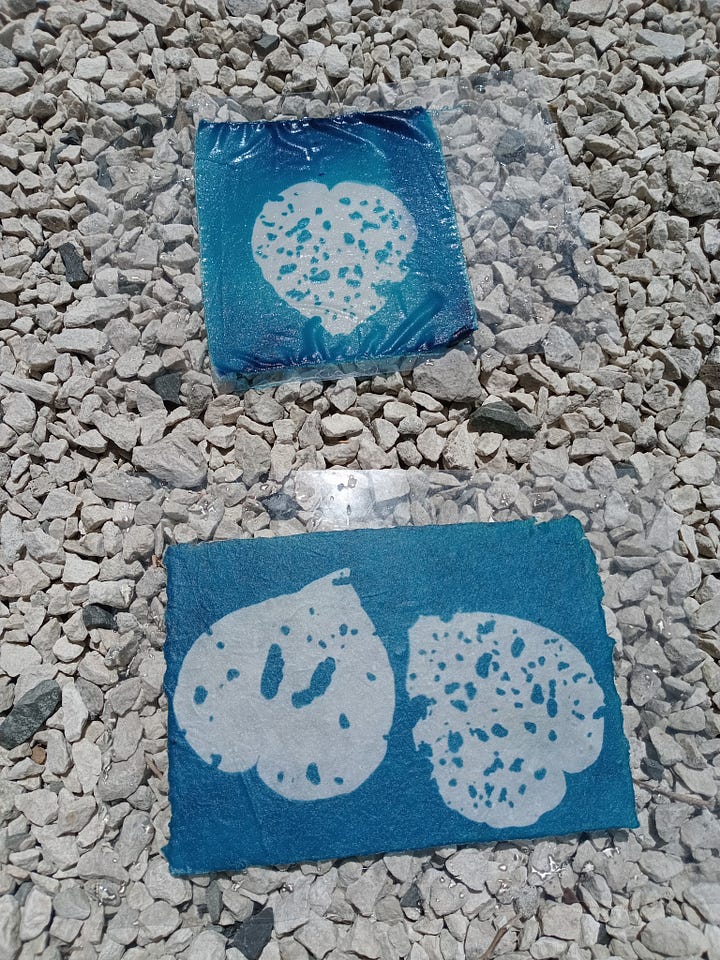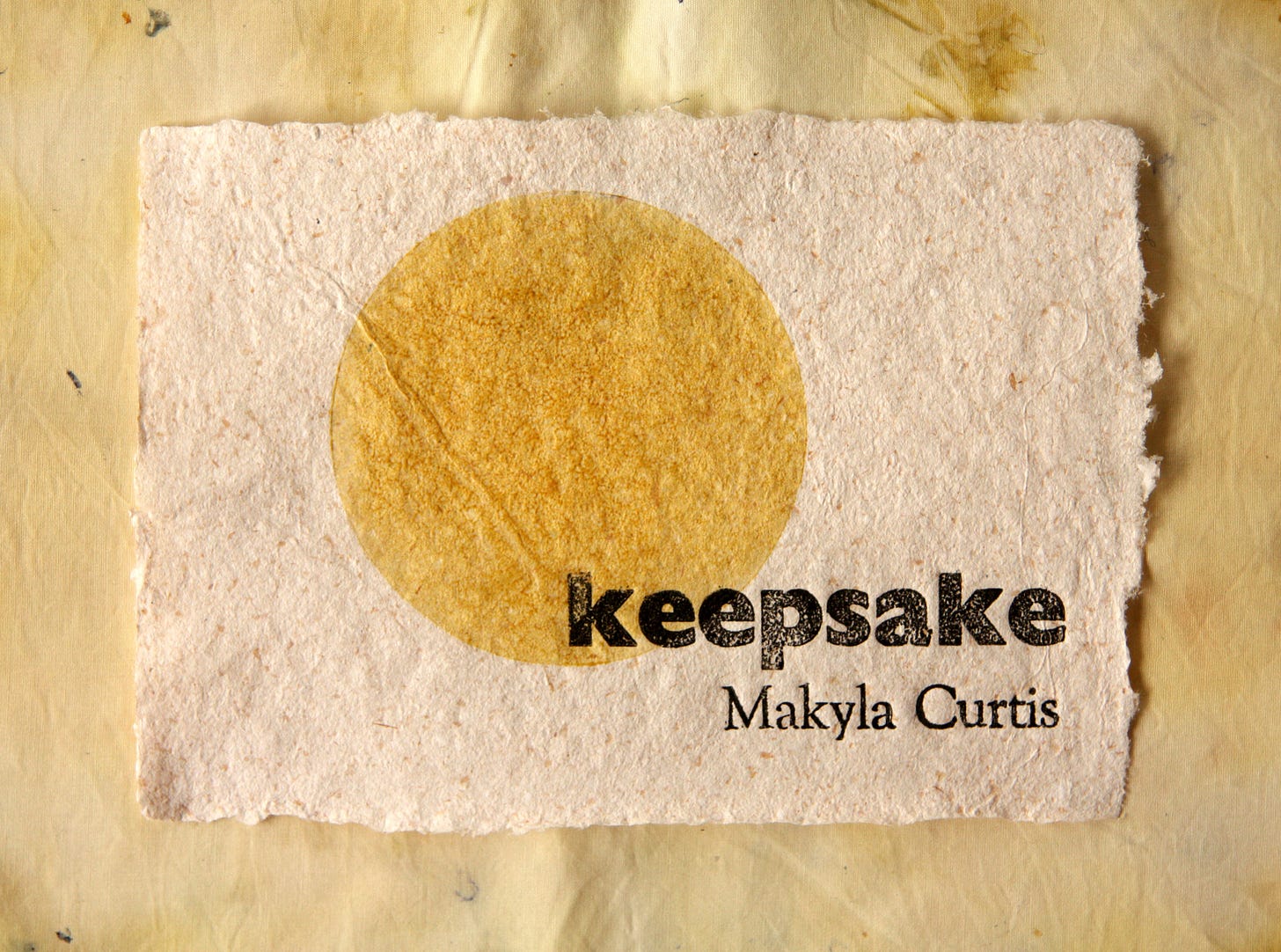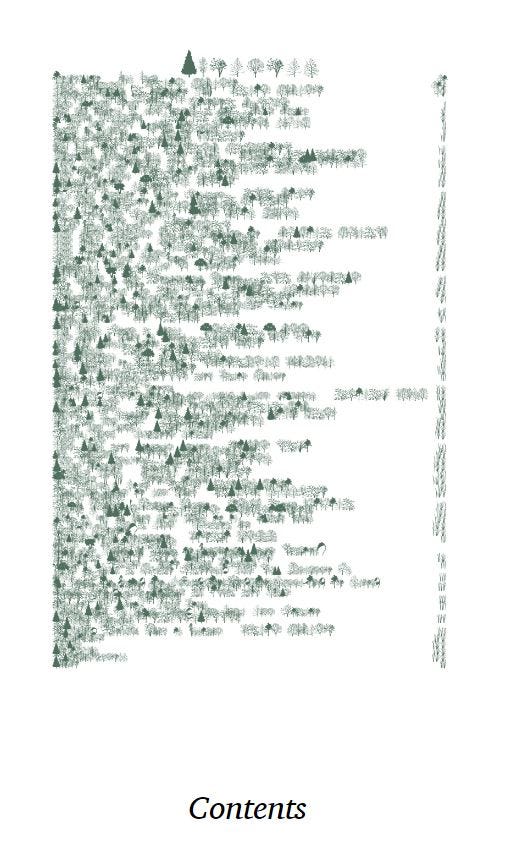Welcome to the Threefold Letter. This month, a new handmade book in progress, in-situ sun-prints, and an artist making language with trees.
---fold here---
Paper and Ink
I have begun printing a new book: keepsake. This will be a limited edition of just eight copies. It is a single poem, its component parts scattered across pages made of onion skins and printed with handmade botanical inks, supplemented with purchased black ink (until such a time I find a way to make a deep black). The cover page, pictured here, uses marigold ink.
The colour was beautiful to work with. The marigolds are soaked in boiling water, then I used the alum / soda ash method to pull the colour into a thick paste. The paste was then dried, ground, and reworked into burnt plate oil and opaque medium using a muller. Then it’s rolled out like any other printing ink. What I love with this print is how the ink remains slightly translucent, taking on the shadows and folds of the handmade paper.
---fold here---
Cyanotypes in situ
It’s hot here in Auckland, hot and muggy, but we’ve been out walking in the morning (before the sun hits its peak) a few times this year. With all that bright hot sun, we took the opportunity to make a few cyanotypes, sun prints, in situ. It’s a fun way to take an impression, and leave the plant specimens behind, unaltered or impacted by ink.
The images aren’t as crisp as when we work on these at home. The plastic covers we used weren’t heavy enough to keep the kawakawa leaves pinned close to the paper, so the edges are furry. But putting the golden print back into a light proof envelope worked well at halting the exposure until we could get home and rinse them out.


---fold here---
Kate Holten
In that magical space of searches and discovery, I found an artist I’d like to share. Kate Holten is an Irish artist who brings together a love of trees and landscape, with myth and lore, with language, typography and alphabets, with ecology, biodiversity and climate change. Holten created an alphabet, letter for letter to our own, based on Ogham and Irish trees. In her books The Language of Trees, she ‘translates’ writing into dense woodlands on the page. Holten opens up so many ways to think about communication, our language habits and histories, and how else we might communicate, especially how we might communicate what is yet incommunicable. I recommend taking a look at her website: https://www.katieholten.com





